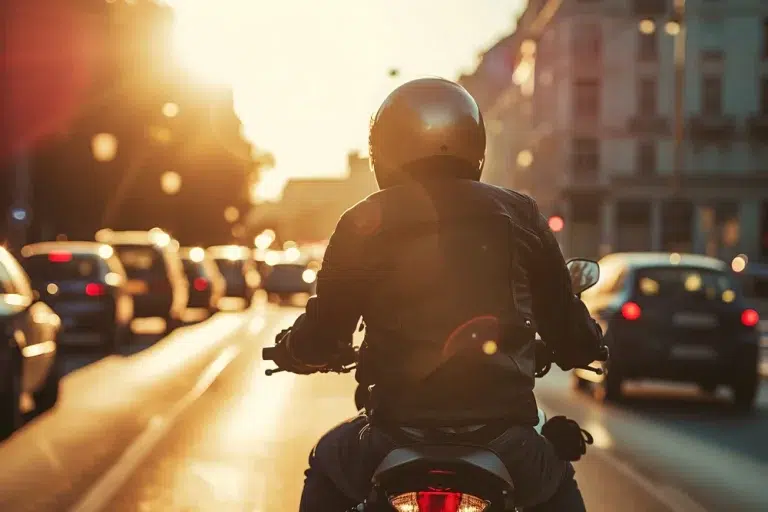Motorbike lovers are often drawn to the sense of freedom and the connection to the road that riding a motorcycle affords. Motorbikes are also a wonderfully convenient way to get around urban environments and even to travel long distances, provided you’ve got the appropriate bike. If you’re in the market for a new ride, but are battling to find the right kind among the many different types of motorbikes available, we’re here to help.
What’s the difference between motorcycles?
Motorbikes differ from each other in a number of important ways:
- Type: Motorbikes can be categorised into various types, each of which is designed for specific riding styles, terrains, and purposes.
- Engine size: Motorcycles can have engines ranging from small displacement (under 250cc) to large displacement (over 1,000cc). The engine size affects power, torque, and overall performance.
- Riding position: A bike’s riding position can vary from upright (found on cruisers and touring bikes), to aggressive forward-leaning positions, which are common in sportsbikes.
- Features: Motorbikes come equipped with different features such as fairings, windshields, saddlebags, electronics, and suspension systems.
- Purpose: Motorcycles are designed for commuting, touring long distances, off-road adventures, racing, or simply cruising around town.
10 types of motorcycles
How many types of motorcycles are there?
It’s hard to give an exact answer to this, as there are quite a few different categories. Here, we’ll look at the most common motorcycle types you’re likely to find in the UK, including adventure, classic, cruisers, custom, naked, off-road, scooters, sportsbikes, sidecars and touring motorbikes.
Let’s dive in.
1. Adventure
It’s all in the name with this one. The versatile adventure motorbike is built for drivers who want to explore different terrains. It features a sturdy frame, knobby tires, robust suspension, and a potent engine, which means it handles both on-road and off-road conditions well. It’s on the heavy side, however, and its weight can make it difficult to manoeuvre through tight spaces. Large, long open roads are where it’s most at home.
Best for: Adventurous drivers looking to explore different landscapes
Pros: Versatile, durable and adventure-ready
Cons: Very heavy with high fuel consumption, and quite expensive to maintain
Examples: BMW R 1250 GS, Honda Africa Twin, Suzuki V-Strom 250
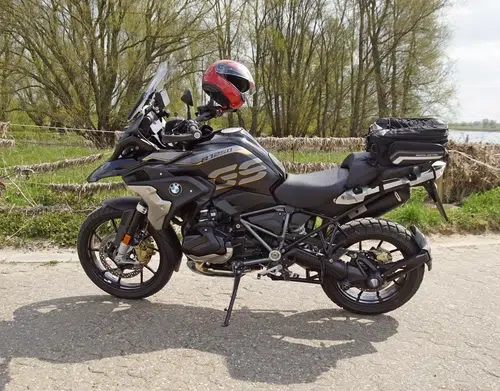
2. Classic
There isn’t a strict definition for what constitutes a classic motorbike, but most riders will agree that any bike made before 1990 or so falls into this category. There are subcategories too: modern classics fall into the 1980 to 1995 period, vintage bikes predate 1975, and veteran bikes predate 1915. If you’re after a bike that probably comes with a bit of a story and heaps of chrome, and prioritises the journey over speed and agility, then a classic motorcycle might be the bike for you.
Best for: Nostalgia lovers
Pros: Timeless style and comfortable riding position
Cons: Lacking in the latest technology and lower fuel efficiency
Examples: 1969 Triumph Bonneville T120, 1992 Honda Fireblade, Norton Commando 750

3. Cruiser
Think of a Harley-Davidson’s low-slung design, wide handlebars, and elongated frame, and you’ve got the right idea for a cruiser. Get on the back of this type of bike and you are immediately and effortlessly cool. Cruisers boast a relaxed riding position, plush seating, and torque-heavy engines, which makes them comfortable for long journeys on open highways. Their hefty weight and limited agility, however, makes them cumbersome in urban environments.
Best for: Riders looking for an iconic design and classic heritage
Pros: Relaxed riding experience and comfortable riding position
Cons: Heavier weight, limited agility, not suitable for urban spaces
Examples: Harley-Davidson Fat Boy, Yamaha V-Star 650, Indian Scout
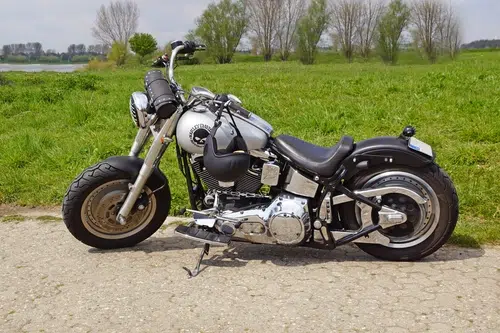
4. Custom
If you can’t quite find what you’re looking for among conventional types of motorbikes, you might be interested in a custom bike. Custom bikes boast one-of-a-kind designs, tailored paint jobs, unique bodywork, and personalised modifications. They stand out from the rest, and reflect your specific taste and style. These bikes don’t come cheap, but if you’re prepared for the cost, they can be magnificent feats of engineering and design.
Best for: Riders looking for something truly unique
Pros: One-of-a-kind design, personalised features
Cons: Higher cost, limited resale value
Examples: Harley-Davidson’s Captain America, Indian Larry’s Grease Monkey, Deus Ex Machina’s The Grievous Angel
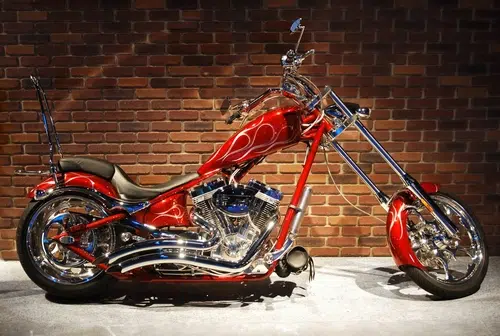
5. Naked
A naked motorbike is all about raw power and minimalist design. Also known as a street bike, it’s stripped of unnecessary fairings and accessories, and bares its mechanical soul for all to see. A naked bike is defined by its exposed frame, sleek lines, and muscular stance, and offers agile handling and responsive performance. With a distinctive upright riding position, it gives a commanding view of the road, making it ideal for urban commuting. It has no windscreen, however, which makes it a little uncomfortable to ride on highways.
Best for: Riders who enjoy an upright riding position with better visibility and control
Pros: Lightweight bike with agile handling and a sleek design
Cons: No real wind protection, less storage space
Examples: Yamaha MT-07, Honda CB650F, Suzuki WV650

6. Off-road
Off-road bikes are typically strictly for dirt terrain — most of the time, they’re not even legal on public roads. Sporting knobby tires, robust suspension, and ample ground clearance, they thrive in rough and rugged environments. Off-road motorcycles typically feature lightweight frames and powerful engines, and are exceptionally agile and easy to manoeuver. They come into their own on dirt trails, rocky paths, and steep inclines.
Best for: Adventurers seeking adrenaline-fuelled biking experiences
Pros: Excellent traction and versatile terrain capabilities
Cons: Because they can’t legally be driven on public roads, where you can go is limited
Examples: Honda CRF450X, Yamaha WR250F, KTM 300 XC-W
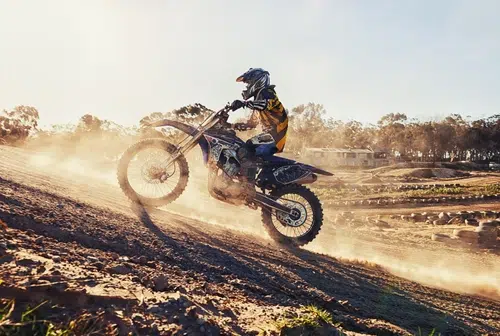
7. Scooter
With their compact design and nimble manoeuvrability, scooters are all about urban mobility. Their most distinctive characteristics — and those that set them aside from other types of motorcycles — are their step-through frame, flat footboard, and small wheels. Their lightweight design and fuel efficiency make them great for congested city streets. As a result, they’re widely loved by beginners and commuters looking for a quick, hassle-free way to get around.
Best for: Commuters, urban dwellers
Pros: Excellent fuel efficiency, easy manoeuvrability
Cons: Small engine size limits their performance on highways
Examples: Vespa Primavera, Honda PCX150, Yamaha NMAX
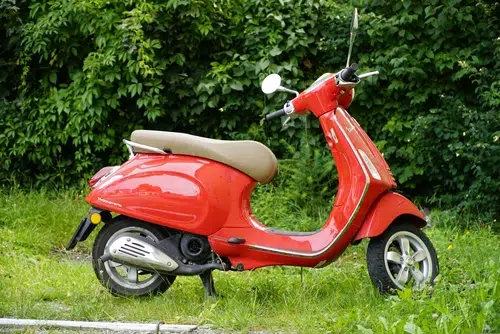
8. Sportsbike
Looking for speed and performance? Look no further than a sportsbike. A lightweight frame, powerful engine, full fairings, firm suspension, razor-sharp handling, and precision cornering make this bike the road equivalent of a race bike — and something every thrill-seeker will love. Be warned that sportsbikes’ forward-leaning riding position puts pressure on your wrists and doesn’t make for a comfortable long-distance ride.
Best for: Adrenaline junkies with a passion for powerful bikes
Pros: High performance, agile handling, quick acceleration
Cons: Limited comfort for long rides, expensive to maintain
Examples: Honda CBR10000RR-R Fireblade, Kawasaki Ninja ZX-10R, Suzuki GSX-R1000
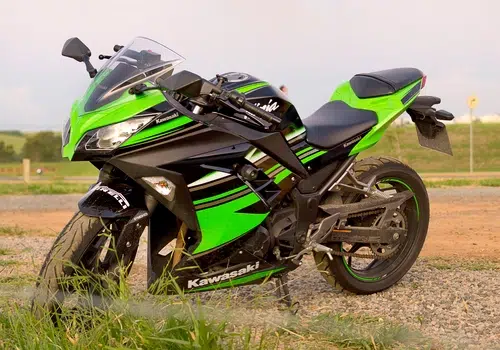
9. Sidecar
Originally dating to the post-war period in the UK, sidecars were designed to give riders the option to carry more people without having to buy a car. In the years since, however, they have become rather niche, loved for their vintage charm rather than their practicality. While their three-wheeled configuration makes them more stable than their two-wheeled counterparts, sidecars are considerably wider and not as easy to manoeuvre.
Best for: Riders looking for a classic ride reminiscent of a bygone era
Pros: Stability, additional passenger and cargo space
Cons: Uneven weight distribution, increased width
Examples: Velorex sidecar, Watsonian Squire sidecar, Cozy Rocket sidecar
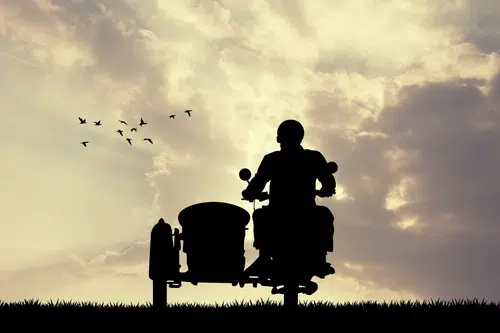
10. Touring
Long-distance comfort and capability are at the heart of a touring bike. It’s designed for extended journeys on paved roads, which means that spacious seating, wind protection, and ample storage options come standard. Some bikes come with heated grips and electronic navigation systems, too. However, its larger size and weight make it difficult to manoeuvre in tight spaces, and its higher price point can be a deterrent for some.
Best for: Riders who love long-distance travel, comfort, and good amenities
Pros: Comfortable riding position, ample storage space
Cons: Heavier weight and higher cost
Examples: BMW R 1250 RT, Honda Gold Wing, Harley-Davidson Electra Glide

Remember that, before you take your new bike for a spin on the open road, it has to be taxed, MOTed and insured. Speak to the team at Howden about motorcycle insurance for your new bike today.
Also read:
- Getting a motorbike licence: All you need to know
- Motorcycle MOTs: All you need to know
- Your guide to insurance for 125cc motorcycles
- What is the National Speed Limit in the UK?
- Free MOT checker – Check a vehicle’s MOT history
- Try our free-to-use Car Tax Checker

